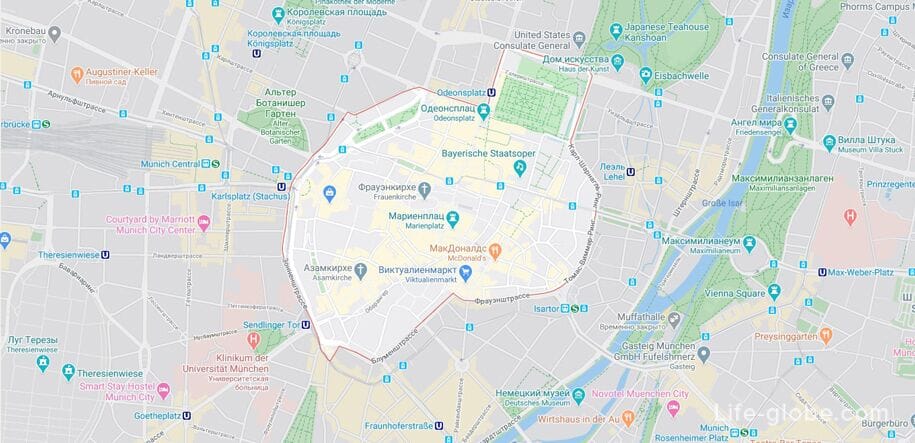
The Old Town of Munich (Altstadt München) is part of and the historical center of Munich. It is included in the list of Bavarian historical monuments.
The old town corresponds to the area that was surrounded by city fortifications until the end of the 18th century, and was the historical starting point for the growth of the city.
This article presents a list of the main and most" bright " attractions, + Christmas markets in the Old Town of Munich, which are worth visiting first or if the city is not allocated much time.
If you need the most complete and detailed list of attractions, important sites, attractions and museums in the Old town of Munich, you can watch here →
In the heart of Munich (Marienplatz) is the Central square of Munich and the heart of the Old city where the traditional story of Munich began with the founding of the market in 1158 by Henry the Lion.
Today the Marienplatz is a pedestrian zone.
The center of the square is adorned with a high column of Mary (Mariensäule), dedicated to St. Mary as "the patroness of Bavaria". The column was erected in 1638 to celebrate the end of Swedish occupation during the Thirty years war.
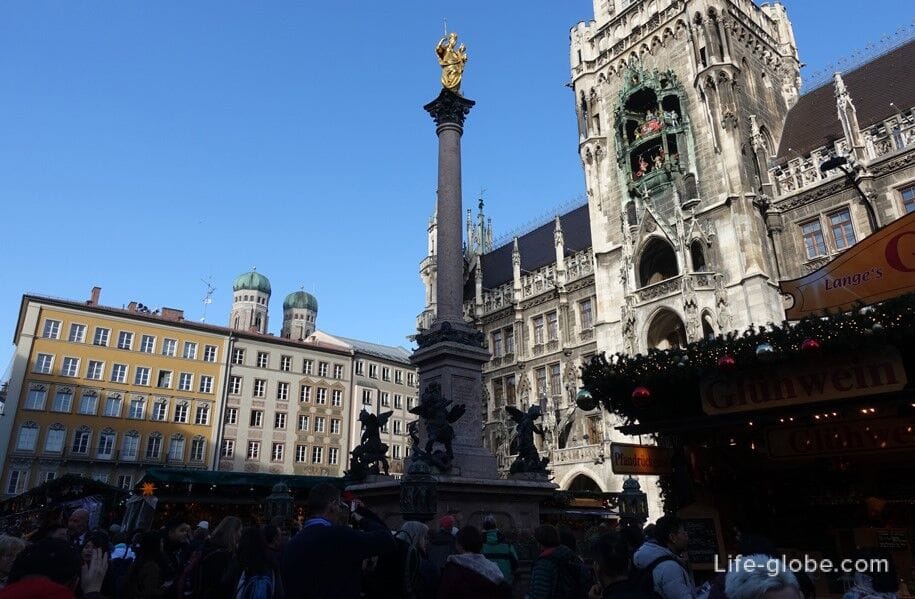
The Northern and Eastern side of Marienplatz mark two town halls:
New town hall (Neues Rathaus), neo-Gothic building of brick and stone which dominates the square, was built between 1867 and 1909.
Currently, town hall is a complex of buildings with courtyards and is the seat of the mayor and the headquarters of the city Council of Munich.
In the upper part of the town hall tower is an observation deck, granting a 360 degree view of Munich.
Address new town hall: Marienplatz, 8.
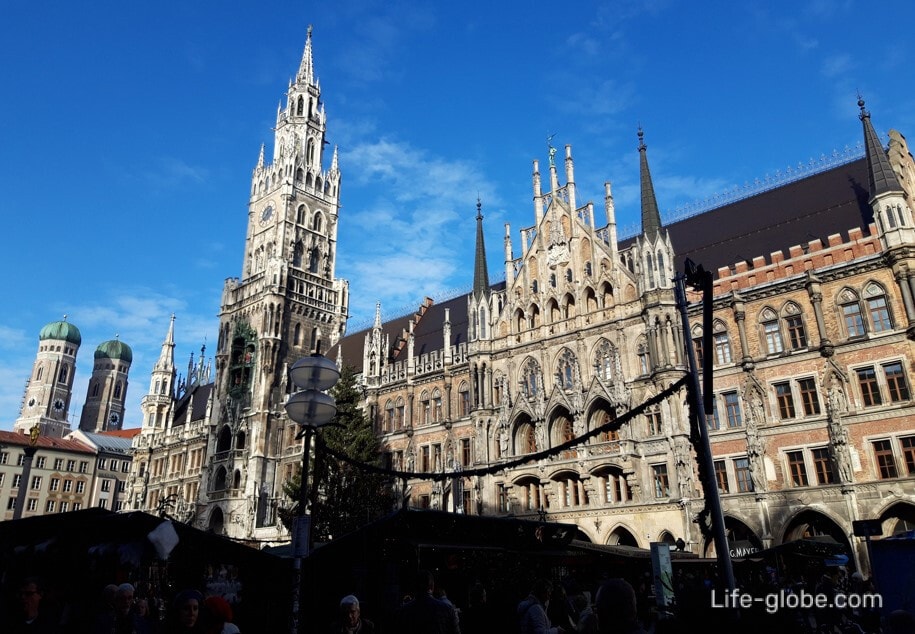
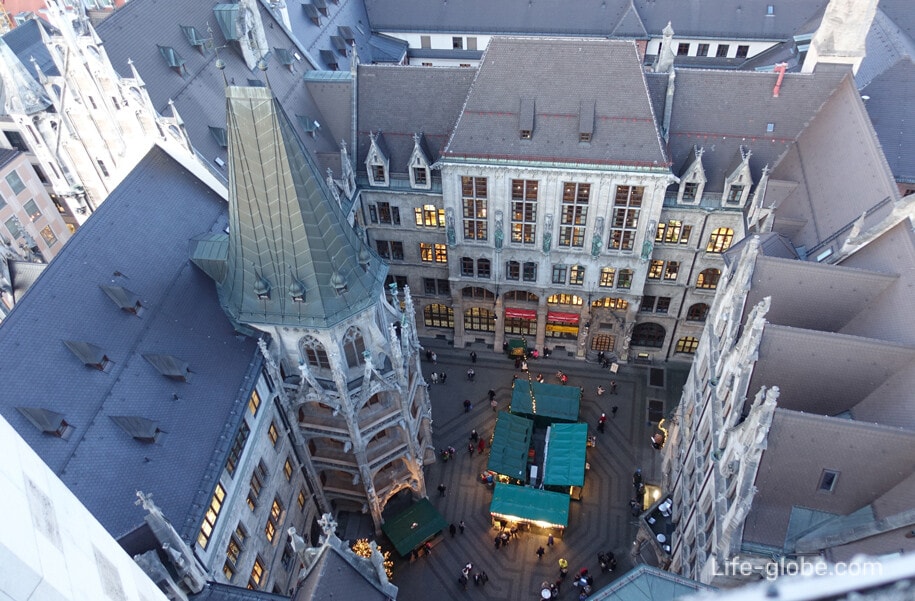
Old town hall (Altes Rathaus) dates back to the 14th century and is the forerunner of the New town hall.
The old town hall arose in part from an old Munich city fortifications, which was converted into the town hall tower, 56 meters high.
Notable in the walls of the Old town hall Ballroom (Festsaal Der), which is also known as Big or Dance hall and is located on the ground floor of the town hall.
The four floors of the town hall tower is a Museum of toys (Spielzeugmuseum), private collection which shows the development of toys over four centuries.
Address Old town hall: Marienplatz, 15. Read more about Marienplatz square...
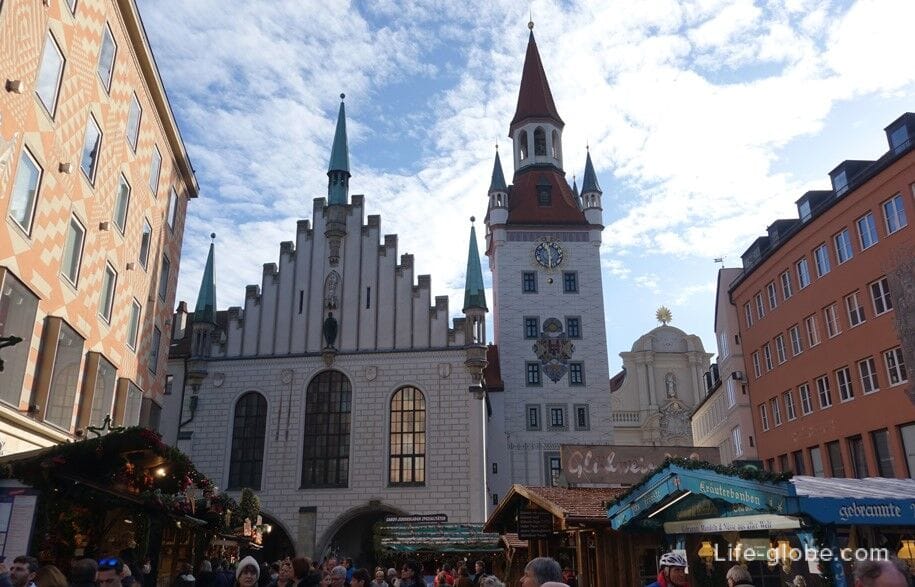
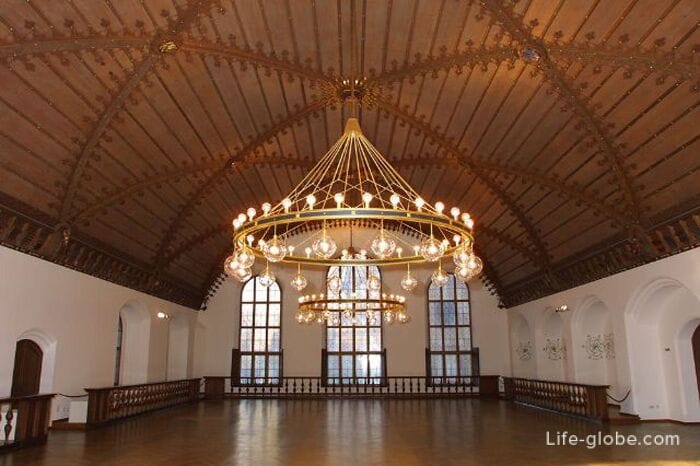
Old courtyard (Hof Alter / Alter Hof), a former Ducal Palace and the first Imperial residence of the rulers of Bavaria, Dating to the 12th century when the old Palace was built as a castle.
In 1255 the Alter Hof was the residence of Ludwig II, Duke of Bavaria. Later, when Ludwig IV, the castle became a permanent Imperial residence and remained so until the 15th century.
Today, the Old courtyard is public and is a complex of buildings with an inner courtyard. Read more about the Old yard...

When the expansion of the city residence (Old yard) has become insecure, in 1385, a little to the North began the construction of the so-called "New residence". New residence later became a residence of the rulers and turned into a magnificent Palace, which was the largest city Palace in Germany and currently is called the Munich residence (Münchner Residenz).
Today Munich is one of the most important art museums in Europe.
The structure of the residence includes: 10 courtyards, residence Museum, the Treasury, the Munich state collection of coins, cuvillies-theater, library, court Church of All Saints and the Bavarian Academy of Sciences.
The Munich residence address: street Residenciales, 1 (Residenzstraße). Read more about Munich residence...
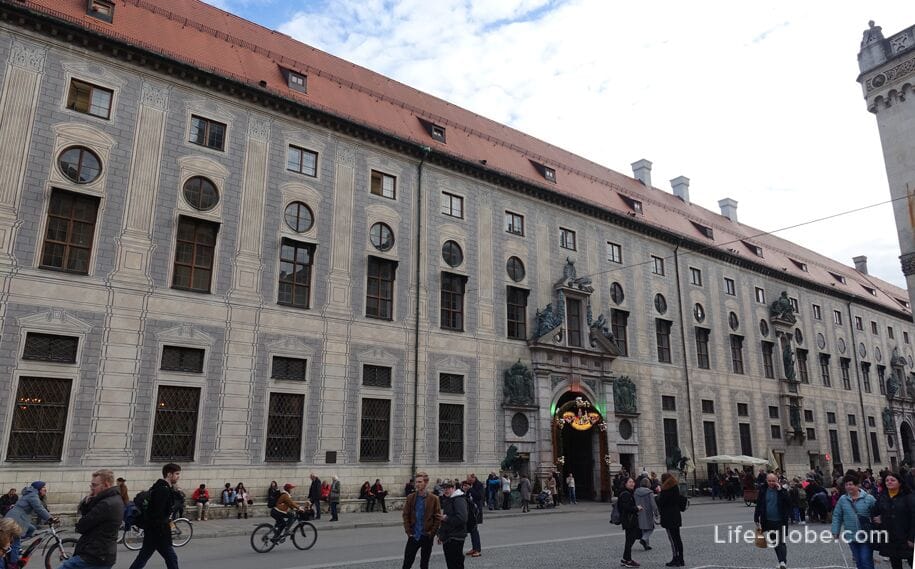
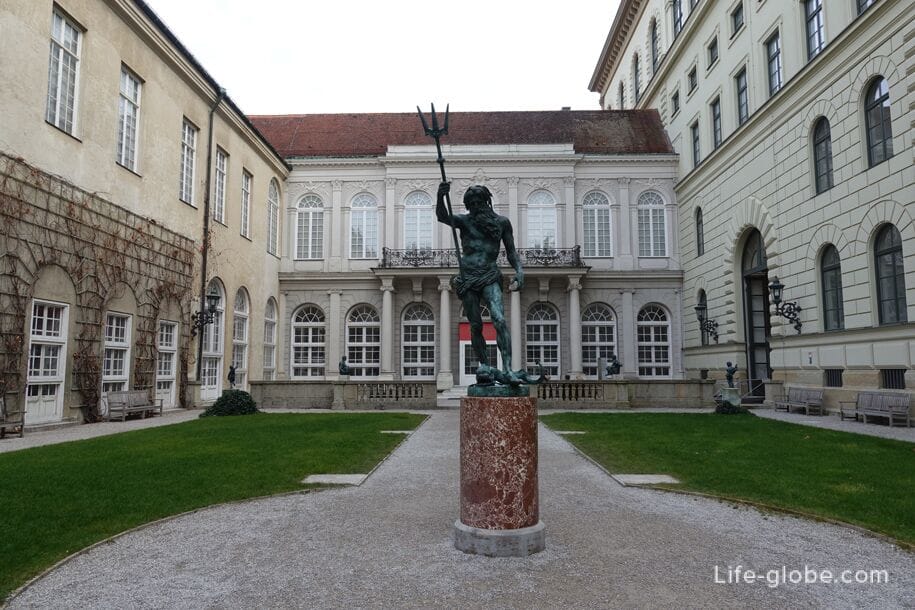
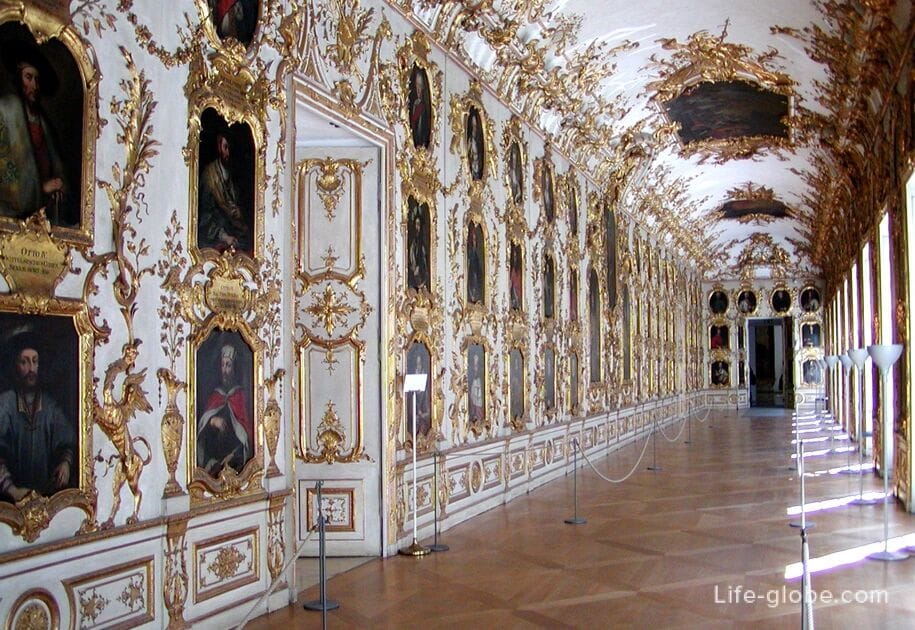
To the North wing of the Munich residence adjoins a Park Hofgarten (), which was originally built as a court garden attached to the Palace.
Today is a public Park with a wall and attractions located in the Park.
The main entrance to the Park overlooks the square Odeonsplatz (Odeonsplatz).
The Park is located on the Northern edge of Munich's Old town, at: Hofgartenstrasse, 1 (Hofgartenstraße). Read more about Hofgarten Park...
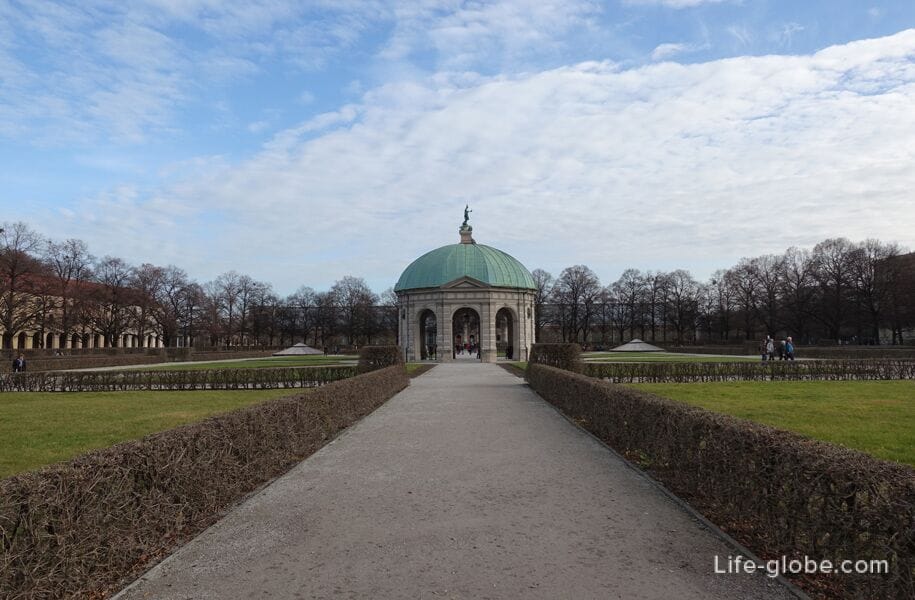
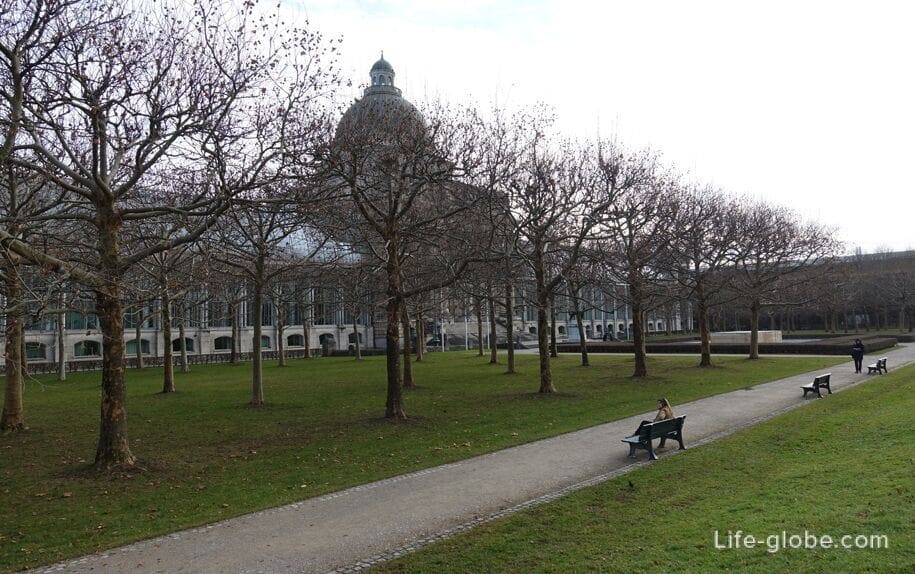
The old town of Munich is surrounded by three preserved (now reconstructed) city gate, originally part of the second city defensive system.
Gates, together with other fortifications, were built by order of Ludwig IV of Bavaria, in the period between 1285 and 1337 years.
Sendlinger tor (Sendlinger Tor / the tor Sendlinger) located in the eponymous square, in the southern part of the old town, at the end of the street Sendlinger straße underground station (Sendlinger Straße).
The gate has a large central arch, two flanking towers with arched passages, and part of the inner wall. Read more about the Sendling Gate...
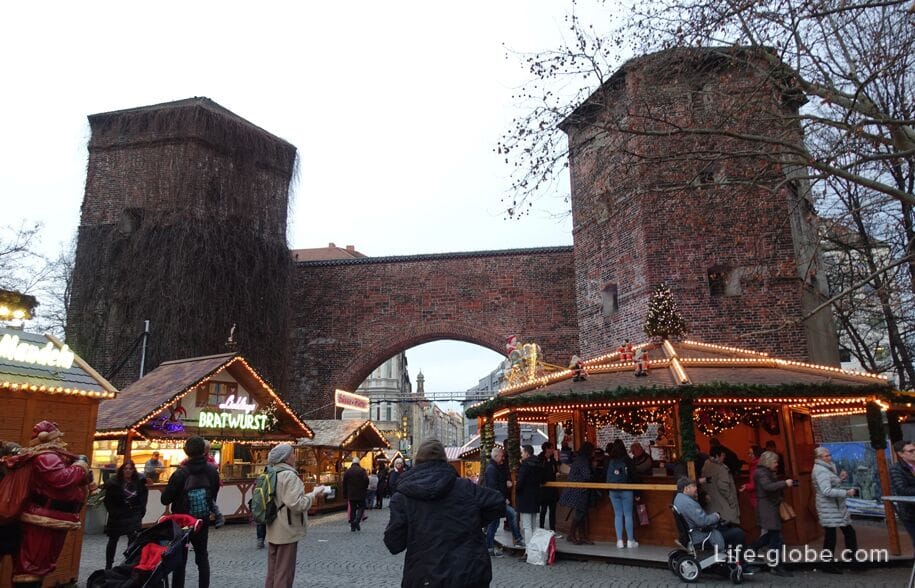
Karlovy gate (Karlstor / After) mark the Western border of the historic old town of Munich. To the East pedestrian gate leads to the pedestrian area, a lively shopping street Neuhauser Strasse (Neuhauser Straße), and in a westerly direction output to Karlsplatz (Karlsplatz).
The gates are two small pseudo-Gothic towers connected by a bridge. Portals (entrances) at the gate made in the form of three tall Lancet arches. Read more about Karlovy gate...
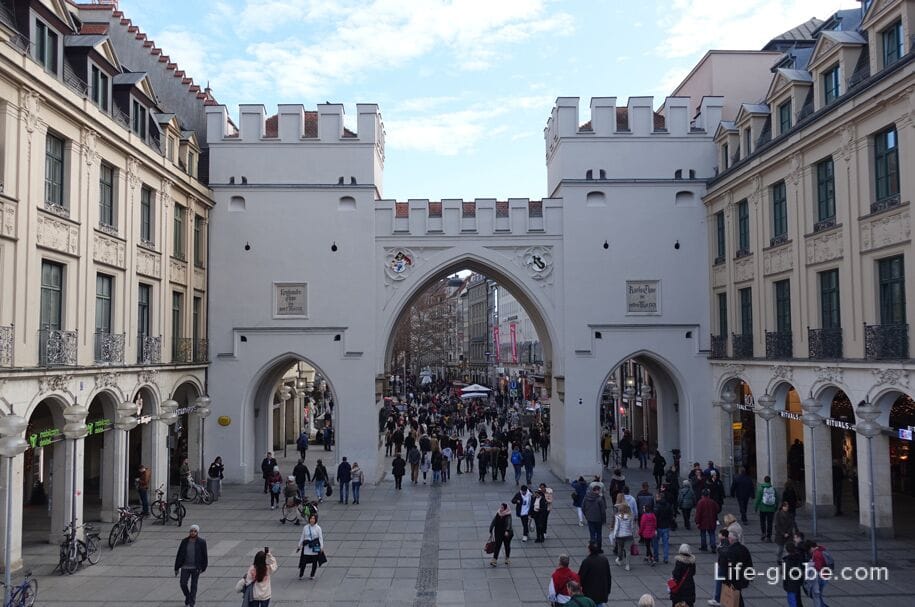
Isartor gate (Isartor / Isartor) was named after the river ISAR (Isar), the road to which passed (and passes) from the center of the city through the gates.
Today consist of: rectangular clock tower; the trapezoidal inner courtyard, which are arched passages; the backyard is surrounded by a wall, with two octagonal side towers with arched openings (passages).
On the East wall gate is the famous fresco "the triumph of Ludwig IV the Bavarian, after his victorious battle against Frederick III the Handsome of mühldorf in 1322".
In the lateral towers of the gate is the Museum of Karl Valentin (Valentin Karlstadt Musäum), dedicated to the Bavarian comedian Karl Valentin and his colleague, the actress Liesl Karlstadt.
Isartor is located on the Eastern edge of Munich's old town, at the address: street tal, 50 (Tal). Read more about the Isartor gate and the Museum.

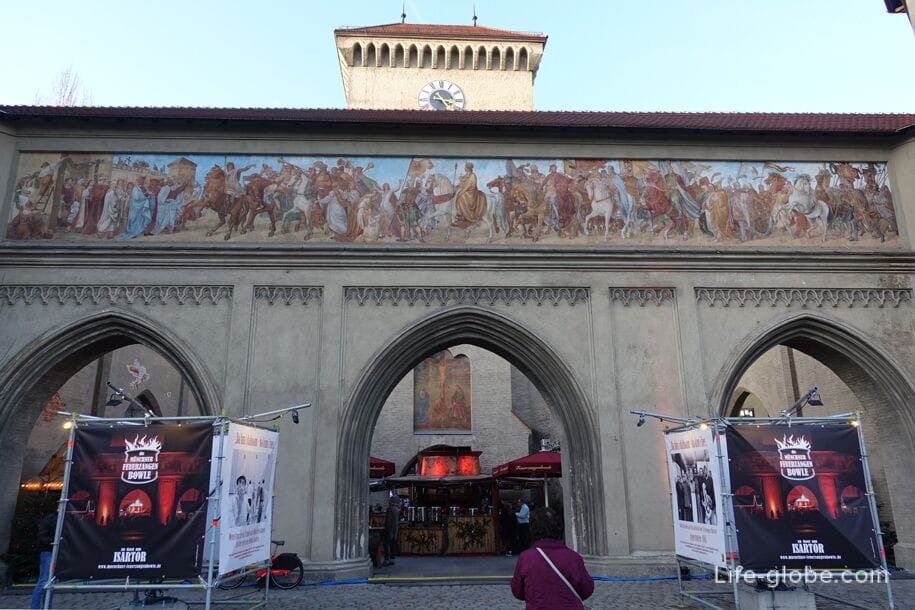
The Frauenkirche or Cathedral of the blessed virgin Mary / Cathedral of our lady (Frauenkirche full name: Dom zu Unserer Lieben Frau), the current Cathedral of the Catholic Archdiocese of Munich and Freising, the history of which originates from 1468.
The Church building stands two tall towers-belfries.
In the upper part of the South tower is an observation deck, granting panoramic views of the city and the surrounding area.
Address Frauenkirchesquare Frauenplatz, 12 (Frauenplatz). Read more about Dresden...
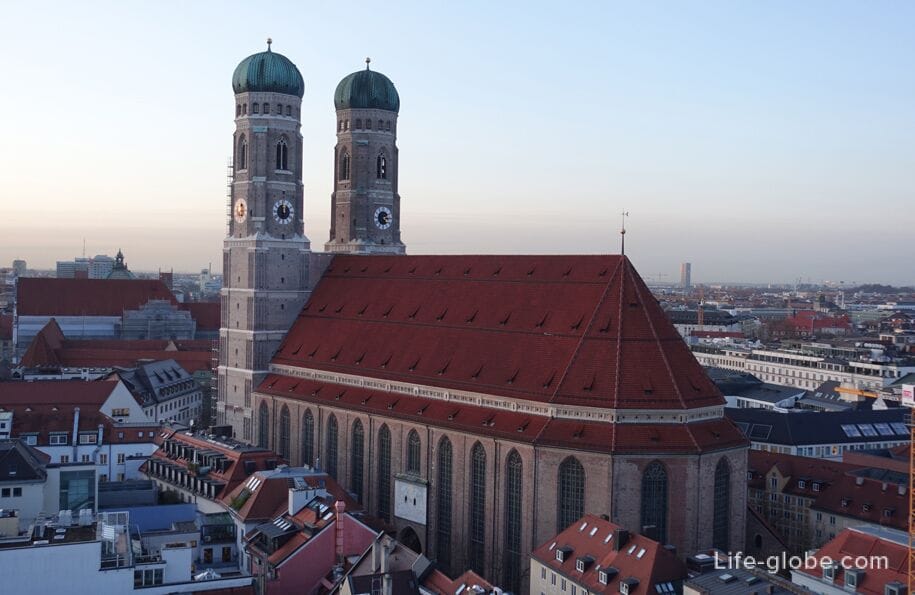
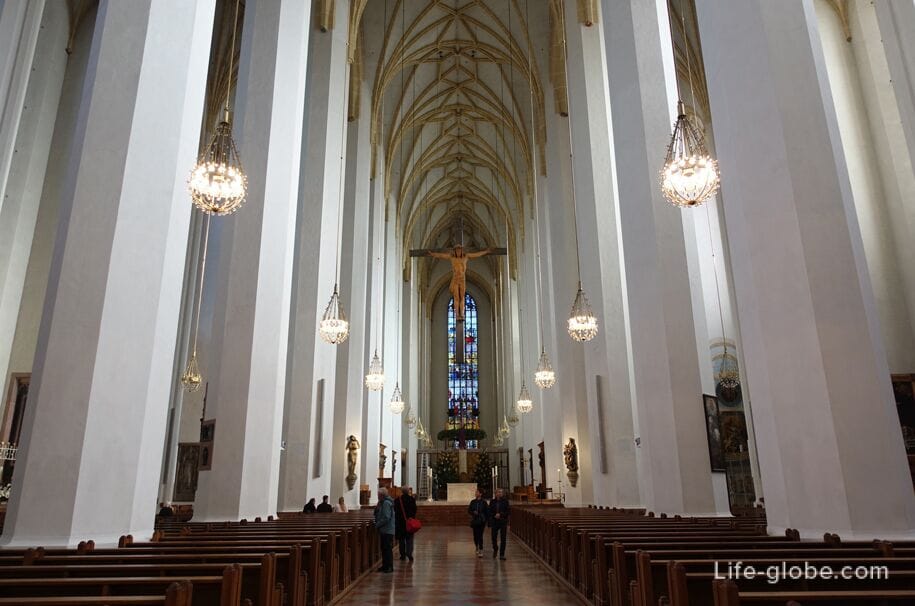
St. Peter's Church, also known as "Old Peter" (Peterskirche / Peterskirche, Alter Peter / Alter Peter) originates from the 11th century.
In the walls of the Church in a glass sarcophagus lies the relics of one of the early Christian martyrs of the Holy Roman Munditia (Saint Munditia), decorated with jewels.
In the tower-the bell tower of the Church is a circular observation deck with panoramic views, including Marienplatz square, old town and the surrounding area.
Address St Peter's Church: Rindermarkt, 1. Read more about St Peter's Church and lookout.
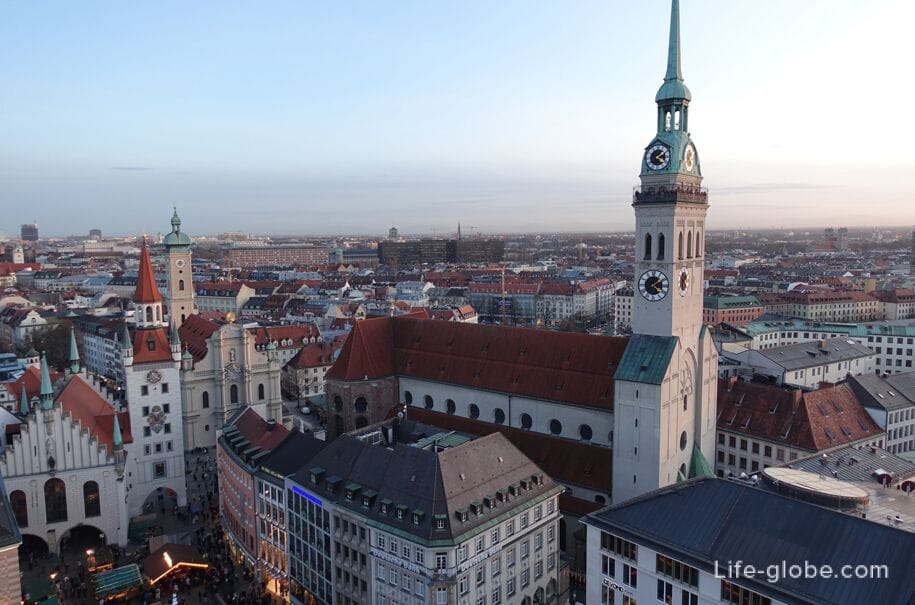
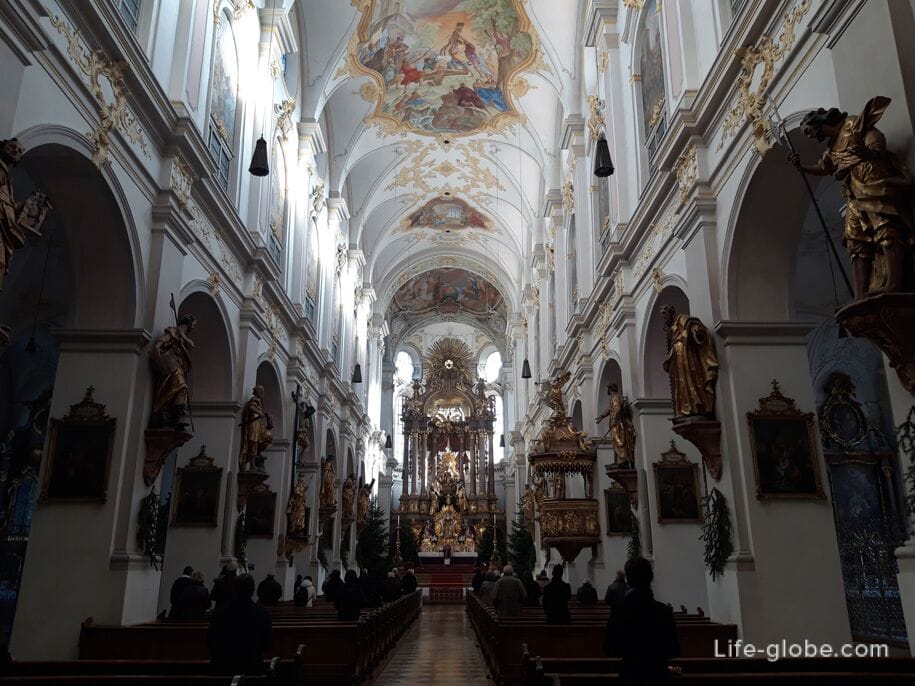
House of brothers Azam (Asamhaus) and in the Heart of Munich (Asamkirche) represent the architectural ensemble and a masterpiece of the late Baroque.
The house of Asamov and Asamkirche (Church of St. John of Nepomuk) was built by the brothers the Basics in the period between 1729 and 1746 years.
Buildings stand out with impressive facades that are written in a single line with other buildings along the street and only the Church extends slightly beyond this range.
Today the house of Azam can be seen only outside, but in Church you can enter and view the interior of the Shrine.
The address of the house of Asamov and Asamkirchestreet Sendlinger straße 32 and 34 (Sendlinger Straße). Read more about the Heart and the home of the brothers the Basics of...
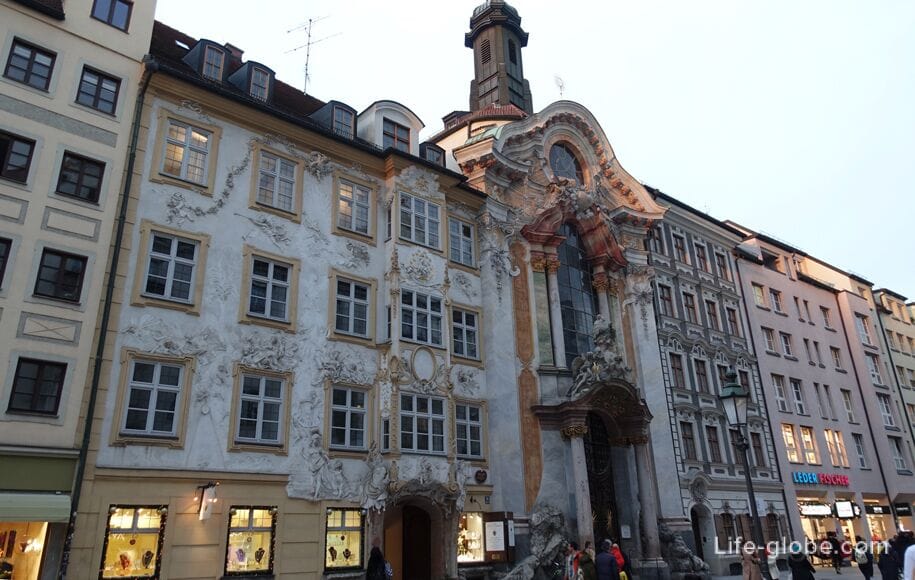

Square Odeonsplatz (Odeonsplatz) located on the Northern edge of Munich's Old town.
The basis for the square was laid out under king Maximilian I of Bavaria on the ruins in 1791, the city wall and to replace Svabinsky gate (Schwabinger Tor) of the new area.
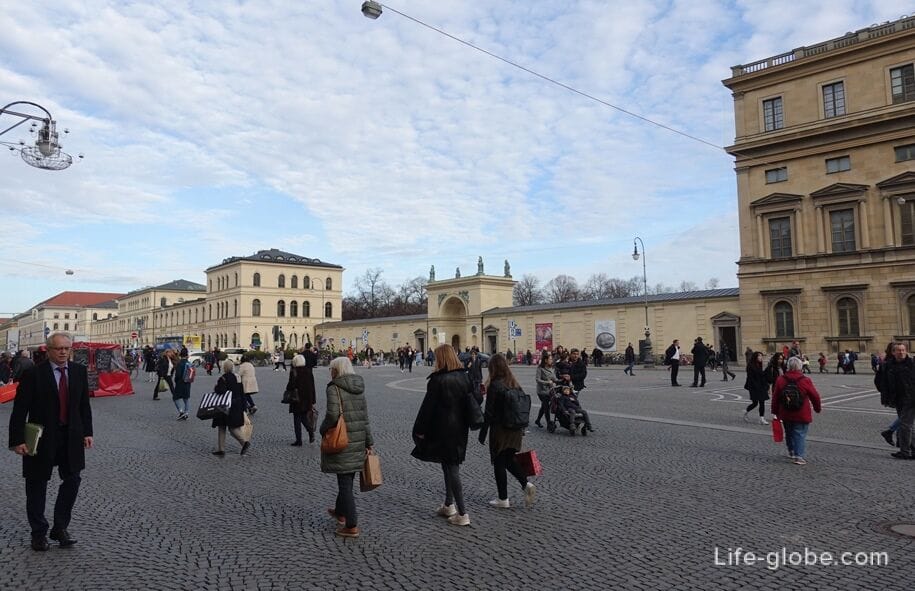
On Odeonsplatz are such important objects as:
- Feldherrnhalle - the so-called "Hall of the Bavarian generals", which is a monumental loggia and a monument built on behalf of king Ludwig I in the years 1841-1844, to honor the glory of the Bavarian army and its victorious generals;
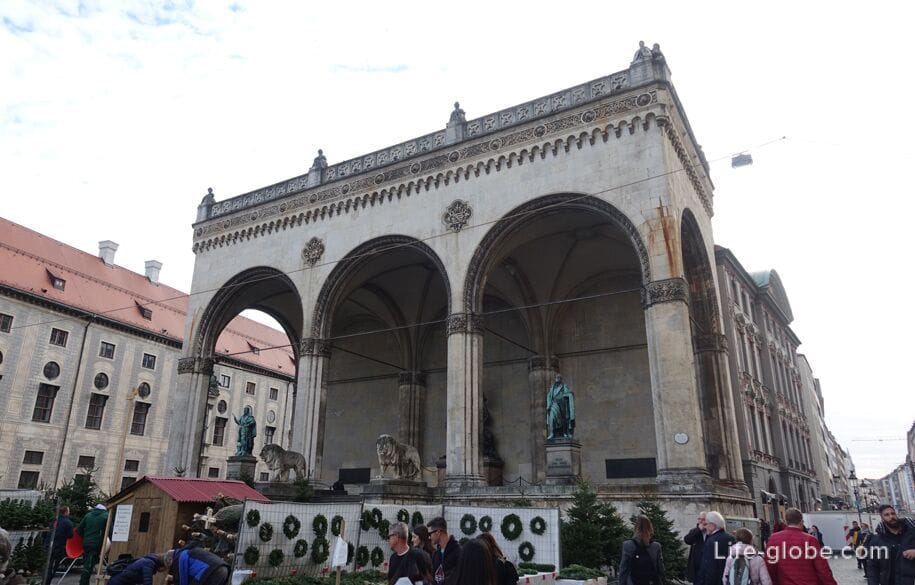
- Theatre Church of St. Caetano (free Wi-Fi. Kajetan), a Roman Catholic Church, which was court, Catholic order and the Church of Teatini.
The Church was established in gratitude for the birth of the long-awaited heir to the Bavarian crown, Prince max Emanuel in 1662;
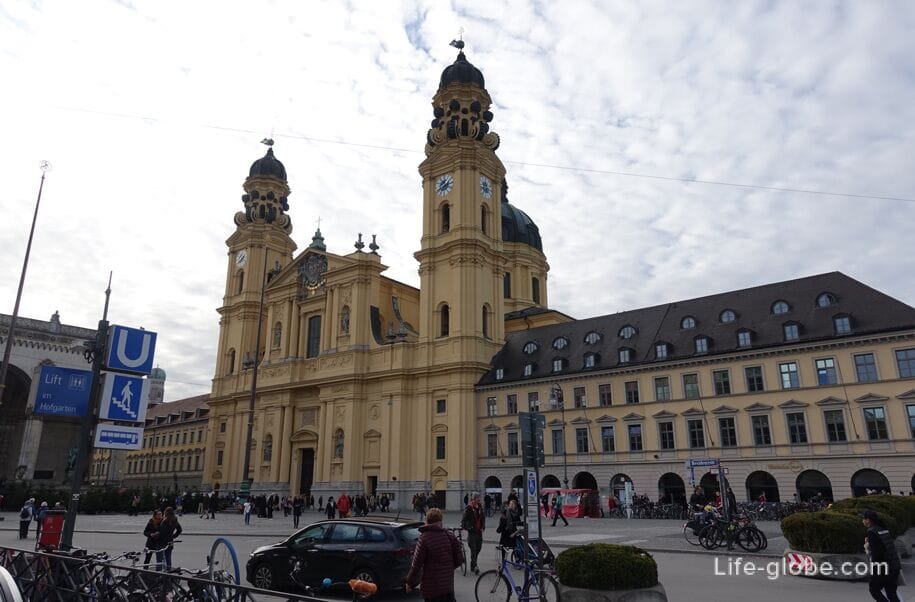
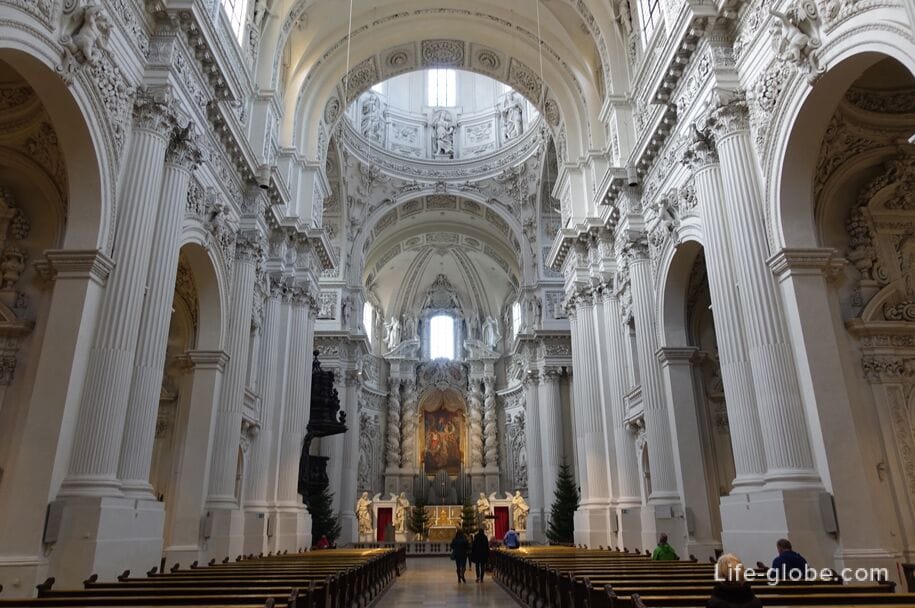
- in addition to the ground-floor are: Moy Palace, a wing of the Munich residence; the main entrance to the Hofgarten Park, a monument to Ludwig I; the commercial building Market; the former concert hall Odeon and Palace of Leuchtenberg, built by the architect Leo von Klenze. Read more about the square Odeonsplatz...

Square of max Joseph (Max-Joseph-Platz) was established in the early 19th century and named in honor of the Bavarian king Maximilian I Joseph.
In the middle, stands a monument to king Maximilian I (Maximilian I Joseph König von Bayern Denkmal), established in 1835.

In the Eastern part of the square are two theatres:
- National theatre (Nationaltheater) is an Opera theater, which started in 1811 and the main face of which form the broad staircase, the portico with eight Corinthian columns and a triangular pediment duplex with statues and paintings;
theatre residence (Residenz Theatre) - a historic court theatre, which was known as Coville theater (Cuvillies-Theatre) and built in the immediate vicinity of the Munich residence 1751-1753 years.
Photos of the new theater of the residence (left) and National theatre (right)
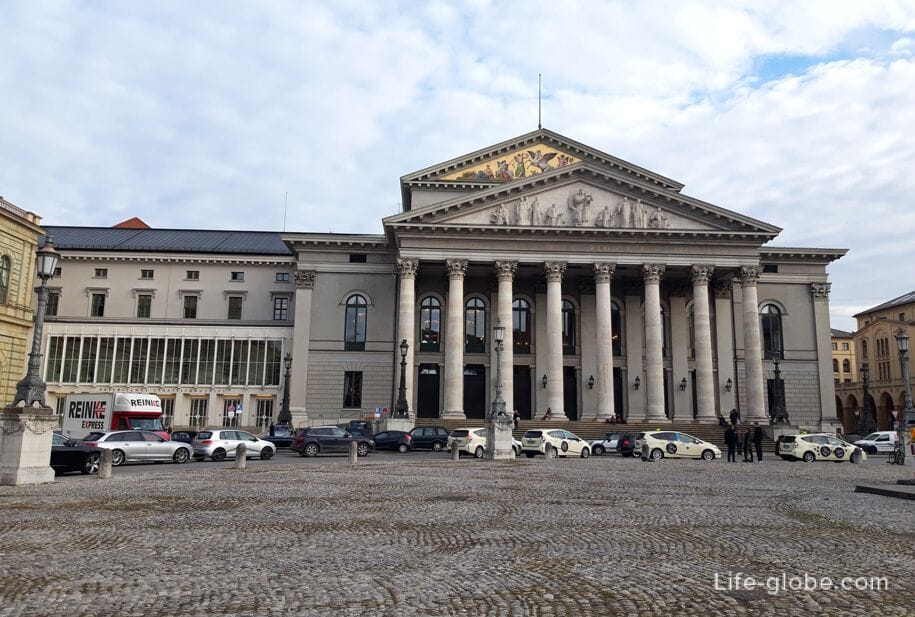
The North side of the Max-Joseph-Platz marks the southern wing of the Munich residence.
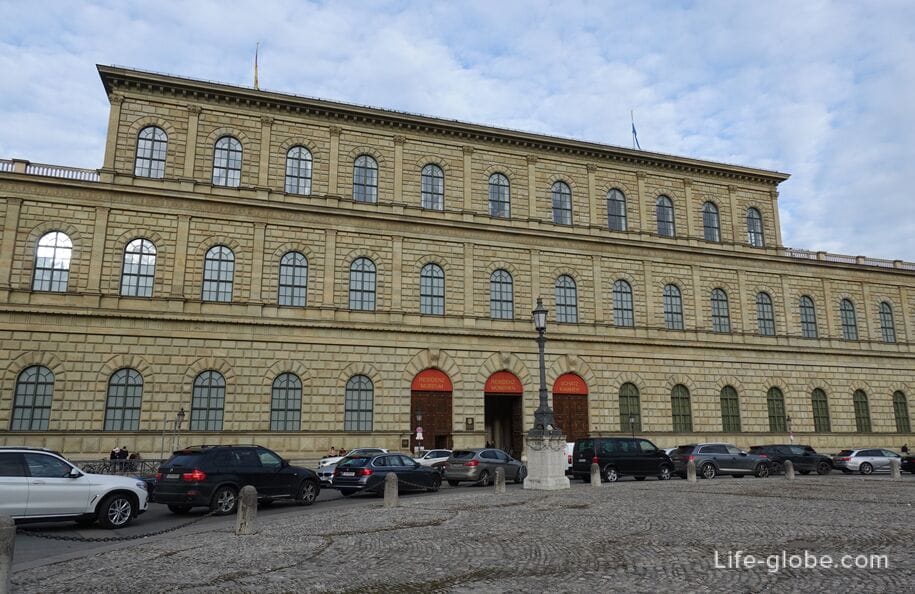
On the South side of the square in the 18th century in Rococo style was built the Palace of Turing-Jettenbach (Palais Toerring-Jettenbach).
The main decoration of the present building of the former Palace is the Northern facade with a columned portico and frescoes tamer of horses.
In the 2000s, the building was converted to commercial and residential center.
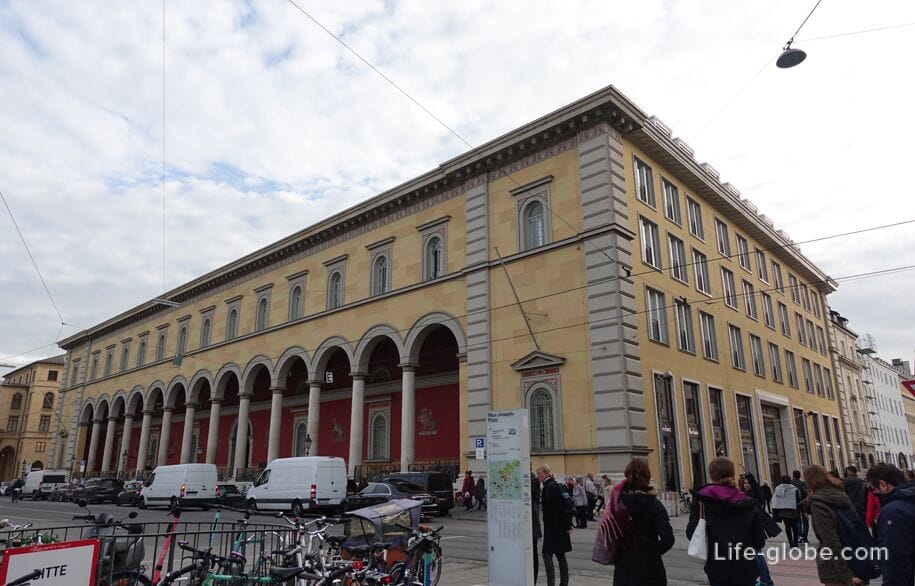
On the West side of the square max-Joseph located the brightly coloured facades of the historical houses of the middle class (now restored). Read more about the square max-Joseph...
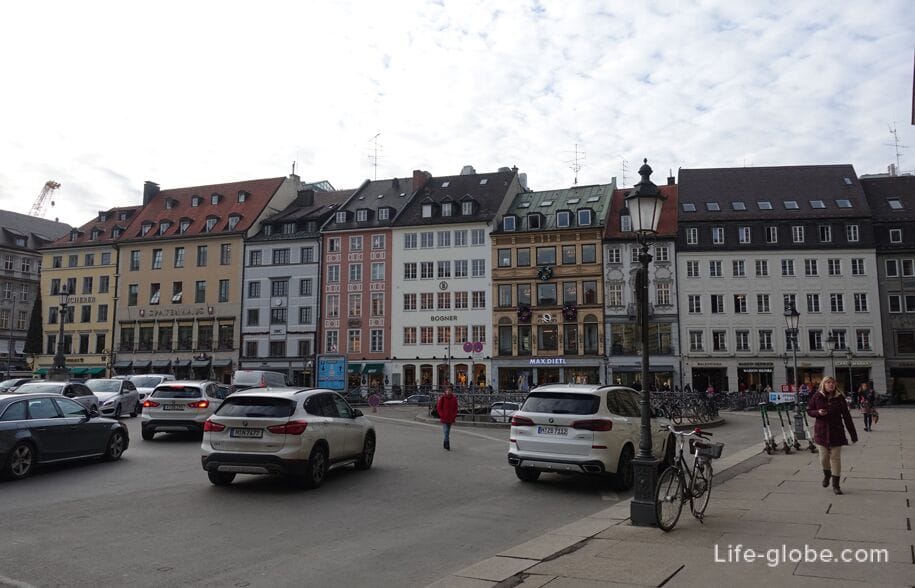
Hofbräuhaus (Hofbräuhaus) is one of the oldest beer halls in Munich.
The hofbräuhaus was founded in 1589 and is opened by the Bavarian Duke Wilhelm V as the court brewery.
In the early 20th century, Munich became one of the most popular holiday destinations and meetings of citizens.
Currently hofbräuhaus functions as a beer restaurant with beer garden. Read more about the restaurant in Munich...
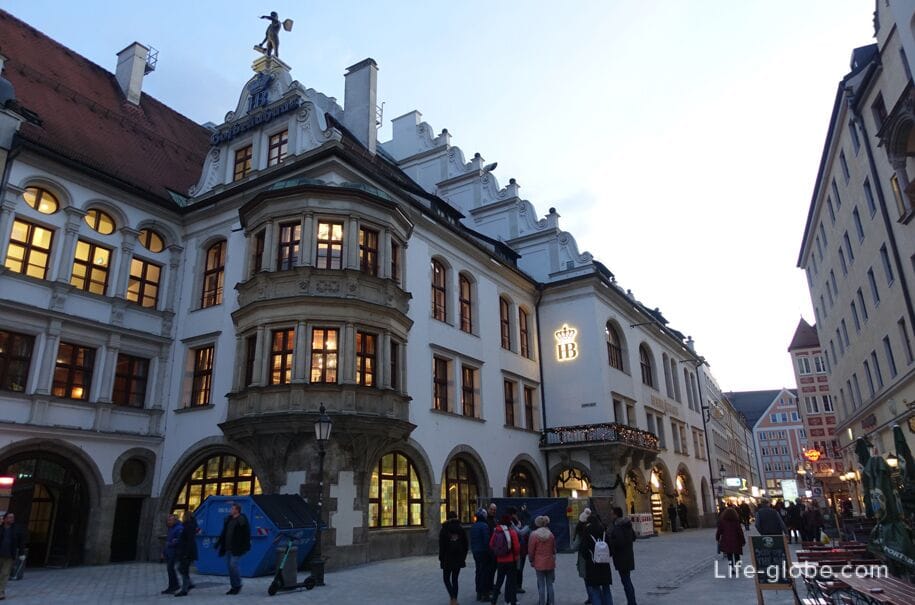
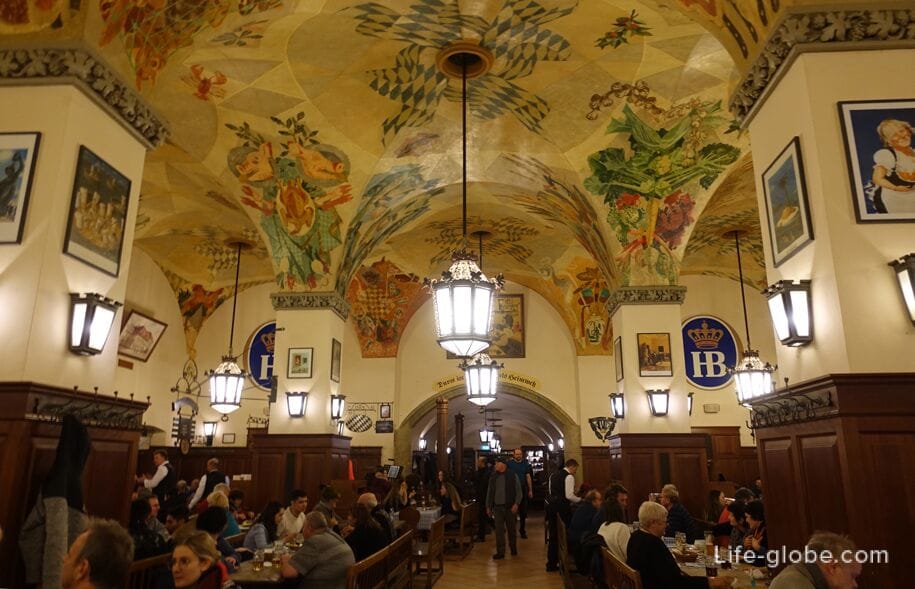
The hofbräuhaus is located on the square Platzl (das) - one of the most beautiful public squares in the historic part of Munich.
Platzl is a small pedestrian area of irregular shape, around which is located a historical building - the old townhouses on the first floor which are now cafés and restaurants.
In addition to a restaurant hofbräuhaus square Platzl also notable is the house of Orlando (Orlandohaus), built around 1900 and is always used as a restaurant, tavern or coffee shop. Read more about square Platzl...

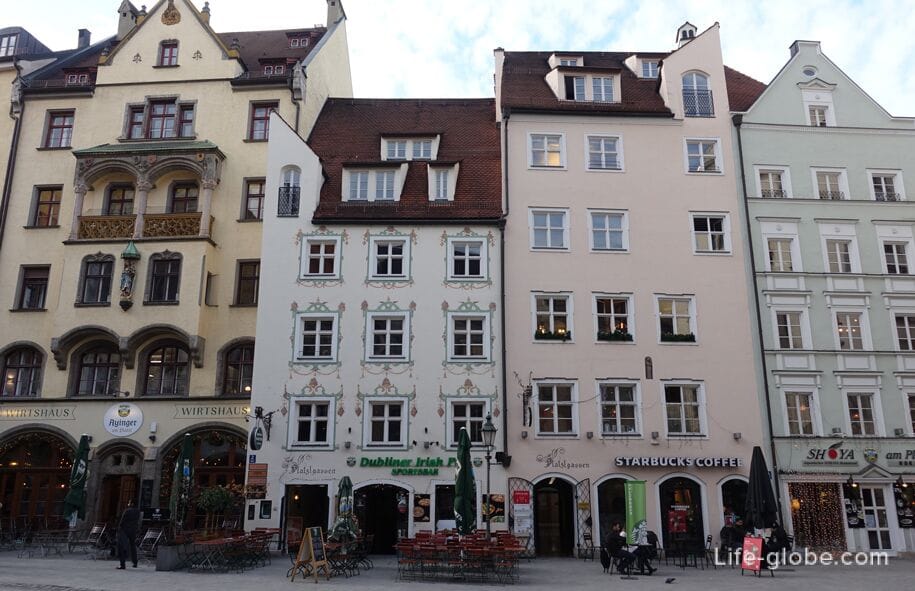
Street Kaufingerstrasse and Neuhauser Strasse (Kaufingerstraße, Neuhauser Straße) to merge with each other and together constitute the Central pedestrian zone and one of the most important commercial axes of Munich.
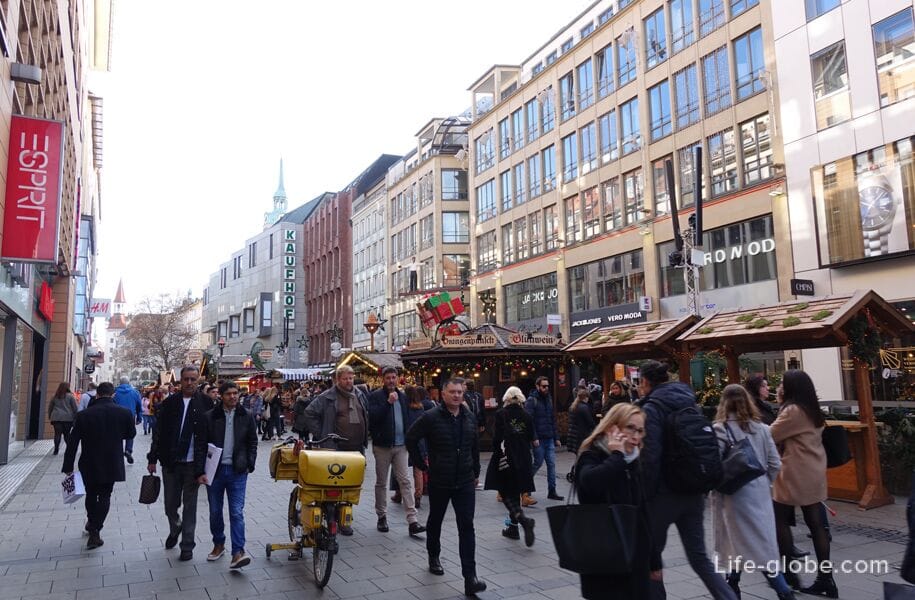
Along the streets located such objects as:
- "House beautiful towers" (Haus zum Schönen Turm), which is connected with the Munich urban legend, and whose name refers to a former gate tower, "Schönen Turm", formerly placed before this house and which was part of the old city wall.
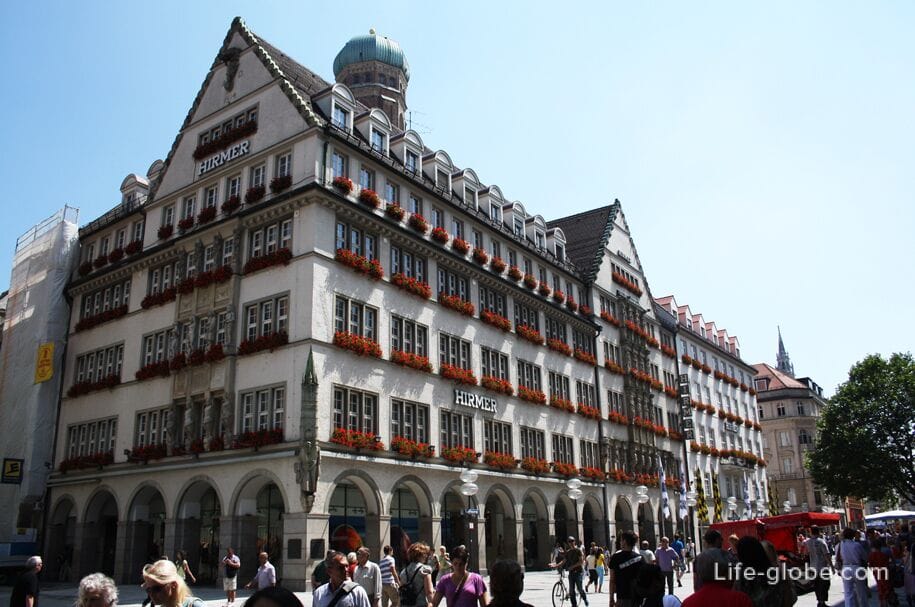
the former Augustinian Church (Augustinerkirche), Augustskola belonged to the monastery built in the 13th century.
Today, the Church hosts the German Museum of hunting and fishing (Deutsches Jagd und Fischereimuseum);
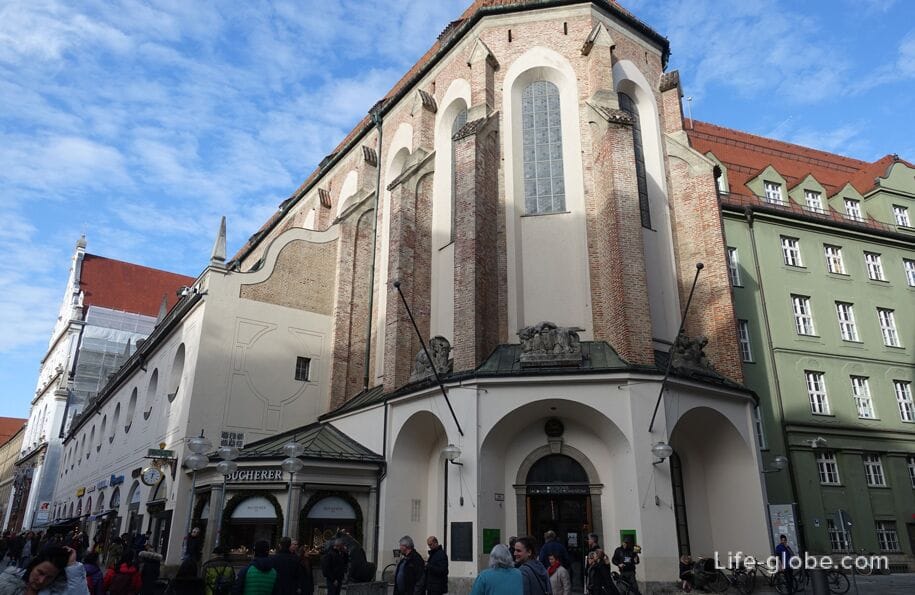
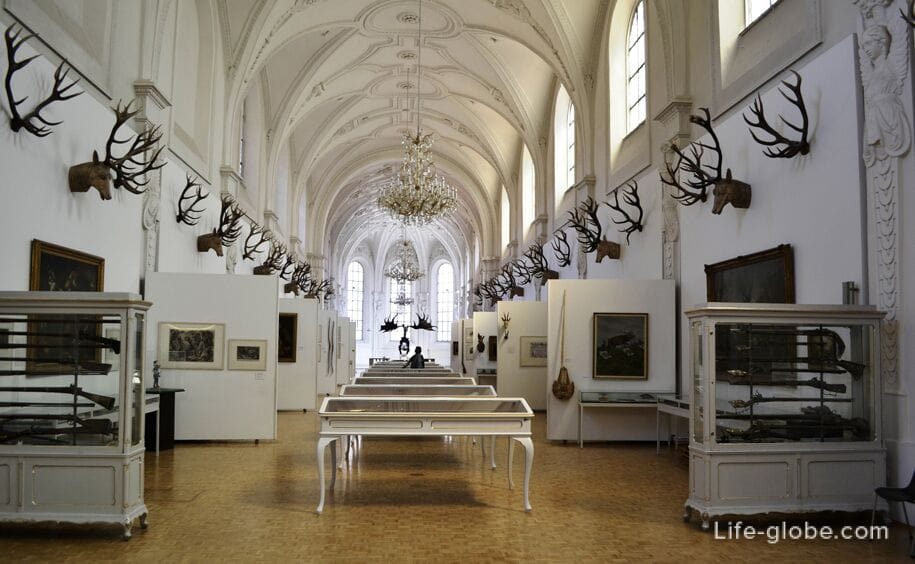
- St. Michael's Church (Jesuitenkirche St. Michael), built by the Bavarian Duke Wilhelm V between 1583-1597 years.
The Church is the largest and the first Renaissance Church North of the Alps.
The appearance of the Church, because of the gable of the main facade and a triangular front, more like the old medieval town hall than a Shrine. However, it has a clear theological peculiarities;

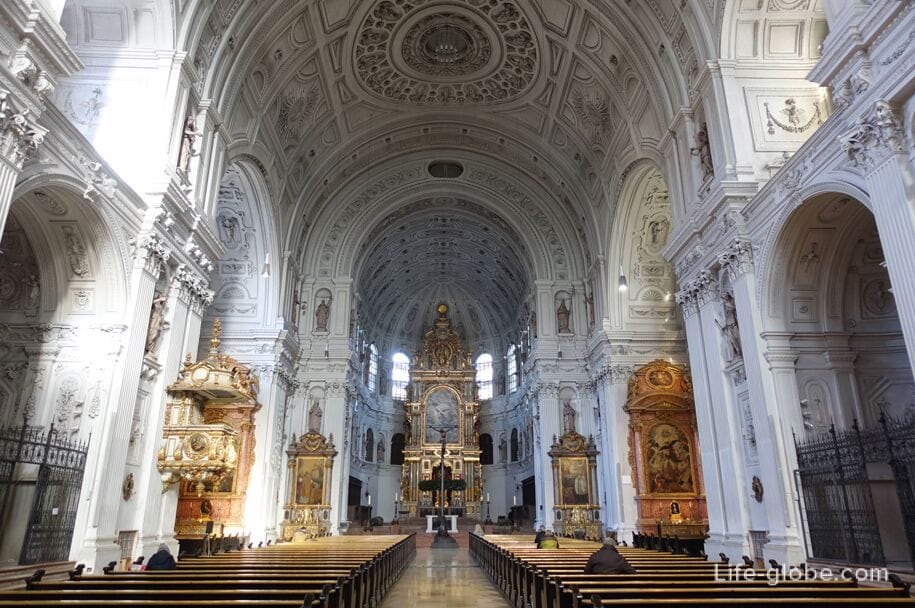
- the building of the Old Academy (Alte Akademie) - a former Jesuit College, built in the 16th century by order of the Bavarian Duke Wilhelm V and is today used for retail, offices and gastronomy;
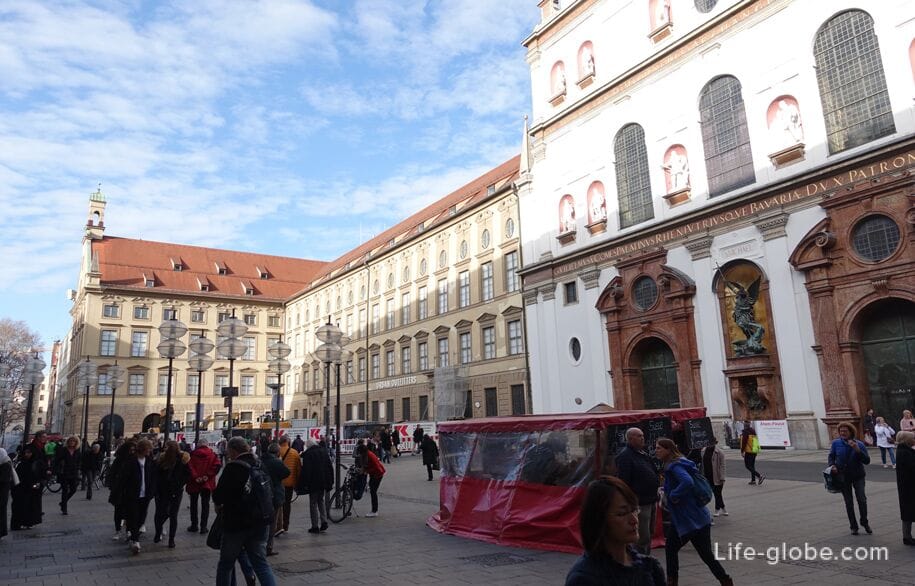
- Church Burgerzaal (Bürgersaalkirche) - the Civic hall (Bürgersaal), erected in 1709 and 1710, respectively, as the new chapel and meeting room for meetings of the Marian congregation of men of the community "the Annunciation".
On the lower floor of the Church, behind the altar, are the Museum room with memorabilia of the Blessed Father Rupert Mayer and various items, images and artwork of the congregation. Read more about the streets Kaufingerstrasse and Neuhauser Strasse...

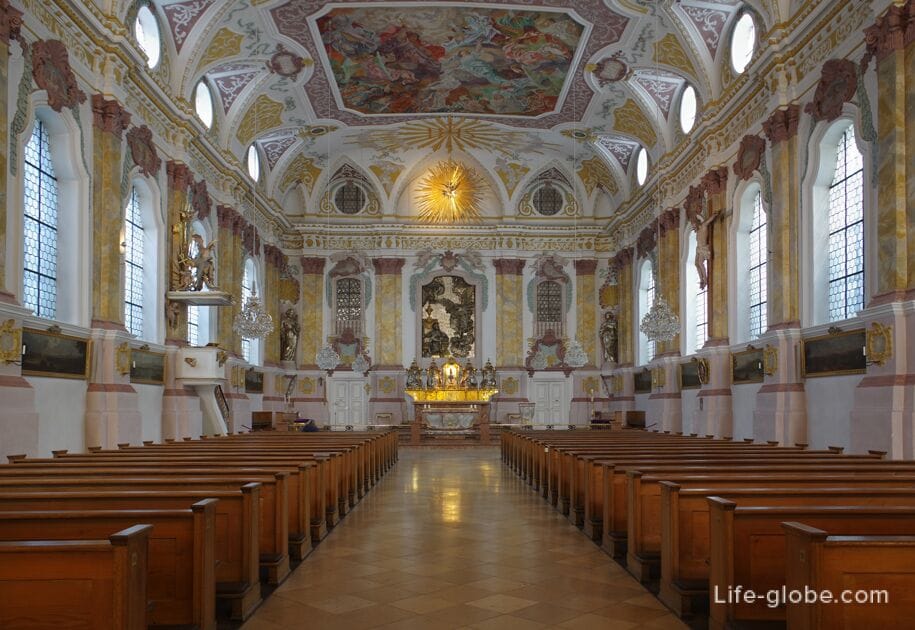
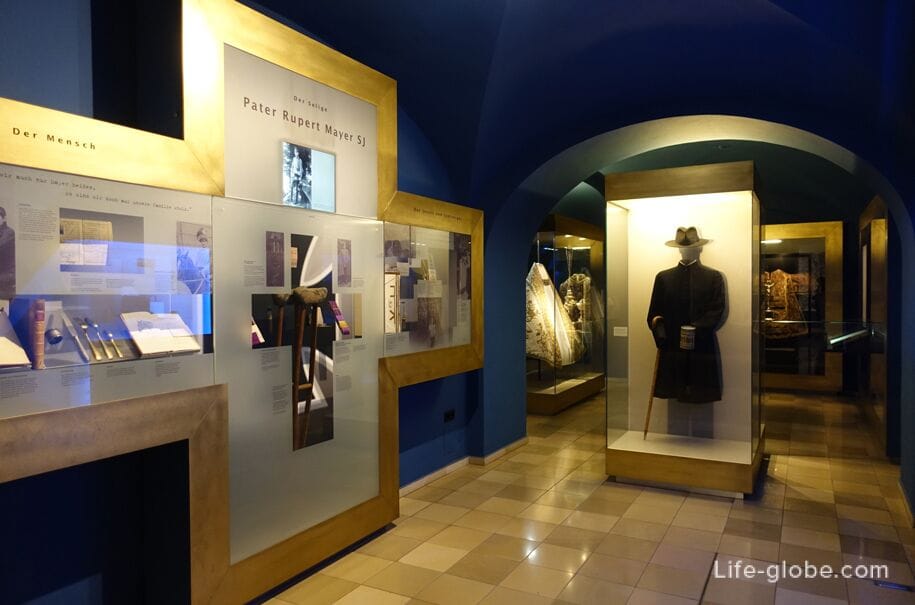
The area of St. James (Sankt-Jakobs-Platz / St.-Jacobs-Platz) is located in the southeastern part of the historic old town.
Today, the area restricted from vehicle traffic. The square is lined with places to stay, the fountain, two museums, a synagogue, a Church and historic homes.

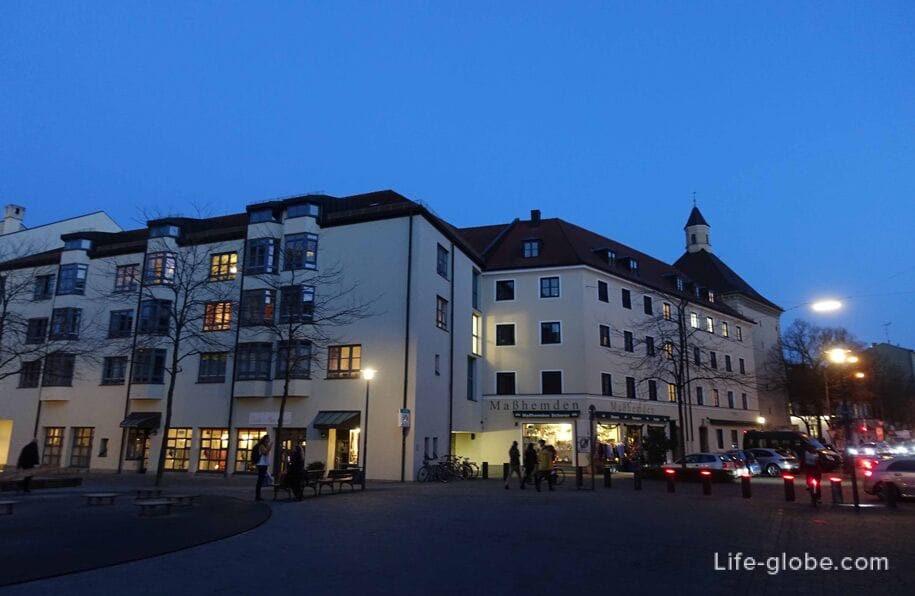
The objects in the area of St. James:
- the complex of the Jewish centeris an architectural ensemble consisting of three independent buildings located in close proximity to each other: the new synagogue Ohel Jacob; the Jewish community center cultural community of Munich and Upper Баварии4 the Munich Jewish Museum (Jüdisches Museum München), the concept of which provides for the transfer of the diversity of Jewish history, art and culture to our days;
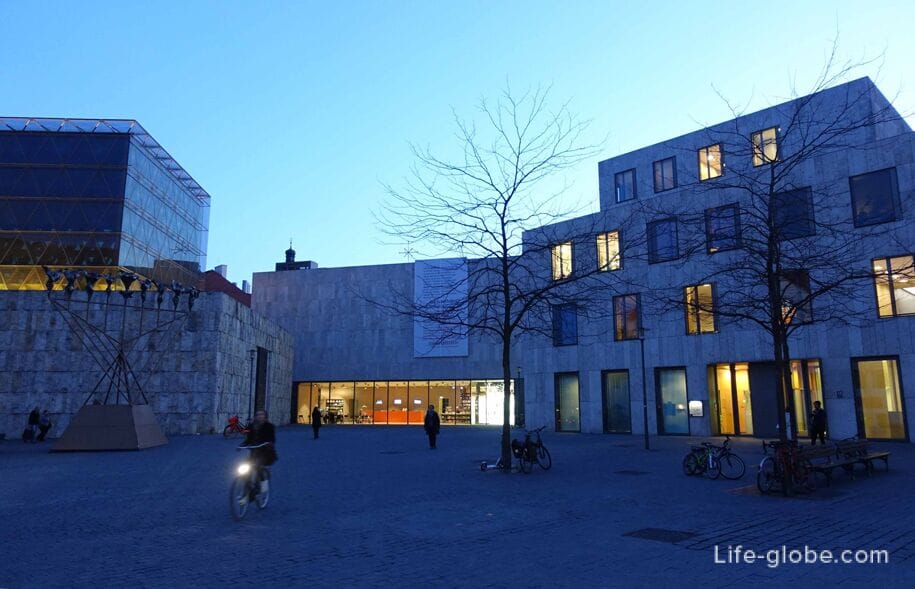
- The Munich city Museum (Münchner Stadtmuseum) with the Museum of the history of cinema (Filmmuseum).
Museum exhibition tells about the history and fate of the city, national socialism in Munich, migration, the history of cinema and puppet theatre from the 19th century, fashion, music, advertising art, urban culture, etc.;

- house ORAG is a historic building with Bay Windows, paintings and stucco work on the walls.
The house was built in 1897 as a business building.
In 1929, the building became the property of Atelier tailoring "ORAG", which is still located in the house;
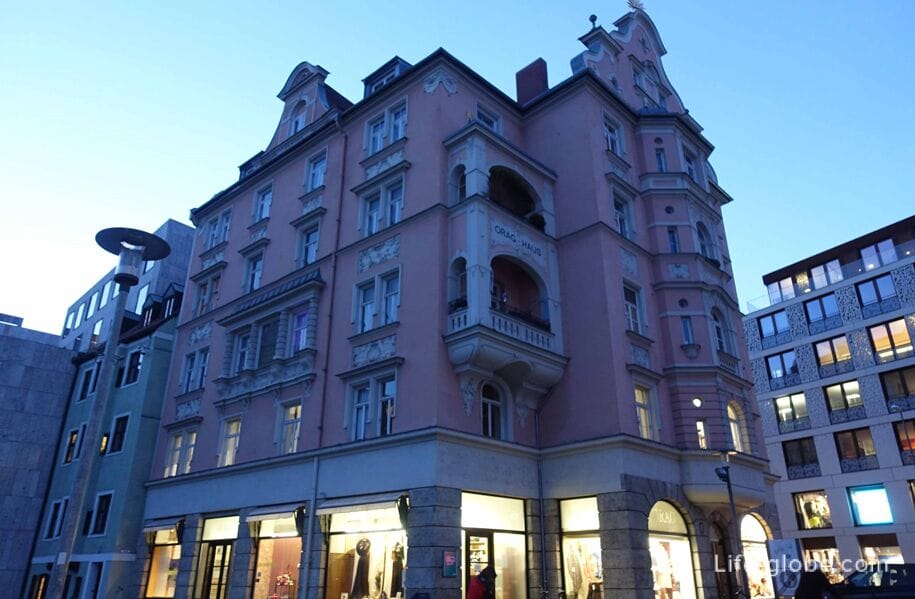
- the house of Ignaz Gunther (Ignaz-Günther-Haus) is a four - story narrow building with a gable mansard roof.
From 1761 to 1775 the house was residential and workplace of a German sculptor and Woodcarver working in the Bavarian Rococo technique - Ignaz Gunther;
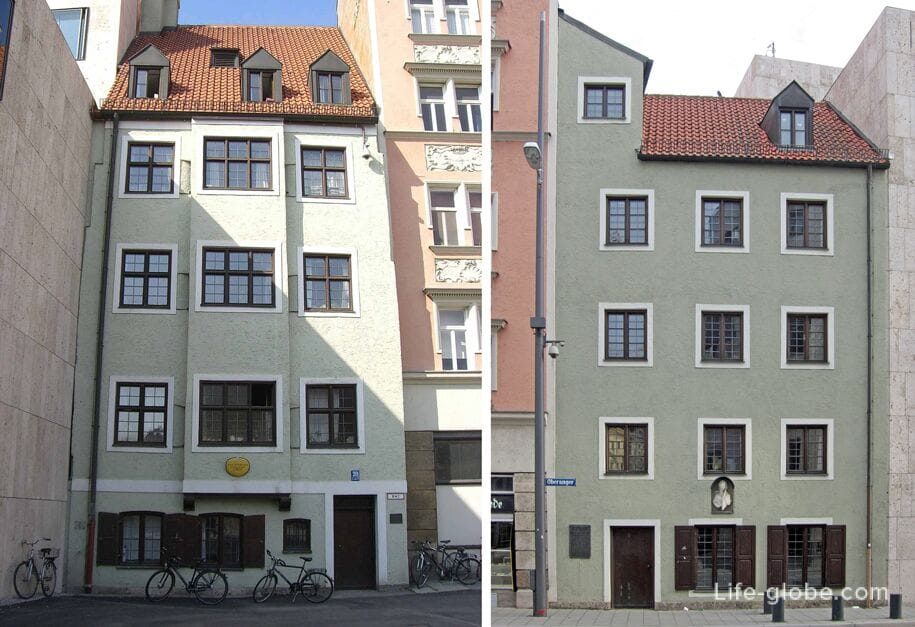
- the Church of St. Jacob on the Anger (Kath. Kirche St. Jakob am Anger), Dating back to the 13th century.
During the war the Church was destroyed down to the exterior walls. In the years 1955-1957 new building was constructed of red brick. Read more about St. James...

On the eve of Christmas and New year one of the most visited places in Munich, including in the old city become Christmas markets - when the squares and streets set up the tents and kiosks, of which there is a lively trade of drink, including warming mulled wine, food (sausages, burgers, cabbage, etc), snacks, sweets, food, Souvenirs and Christmas goods.
In the old town of Munich, there are 5 Christmas Bazaar and one outdoor ice rink:
- on the Marienplatz - the Christmas market Christkindlmarkt, which is the main and one of the most popular Christmas markets of Munich.
Square tree set, and the tents and stalls outside the city centre and are also available on surrounding streets: street Kaufingerstrasse, Neuhauserstrasse the street, the street and square Rindermarkt, street Rosenstraße at the beginning of the Sendlinger street and in the courtyard of the New town hall (Der Prunkhof);
- around Sendlinger tor gate is a small and cosy Christmas market;
- the courtyard gate Isartor;
- in the Emperor's court (Kaiserhof) of the Munich residence;
- in mid - November to mid-January, on Karlsplatz ice rink under the open sky with the skate rental. There is also a bar with Beers, warming mulled wine and snacks.
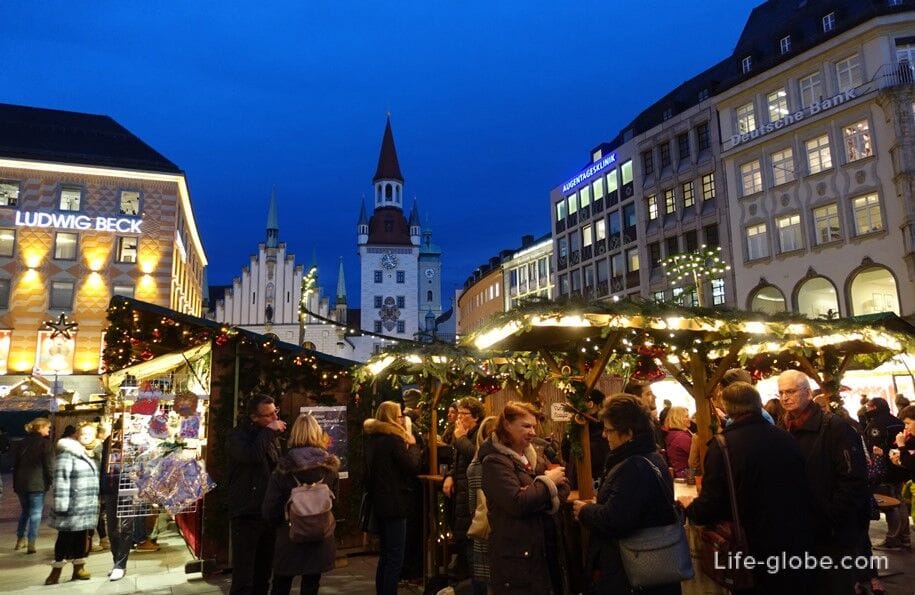

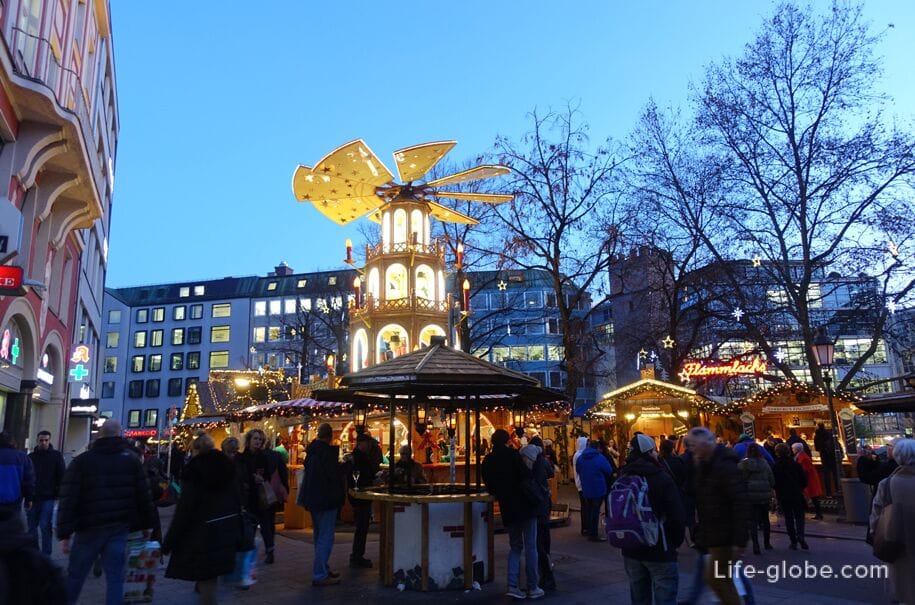
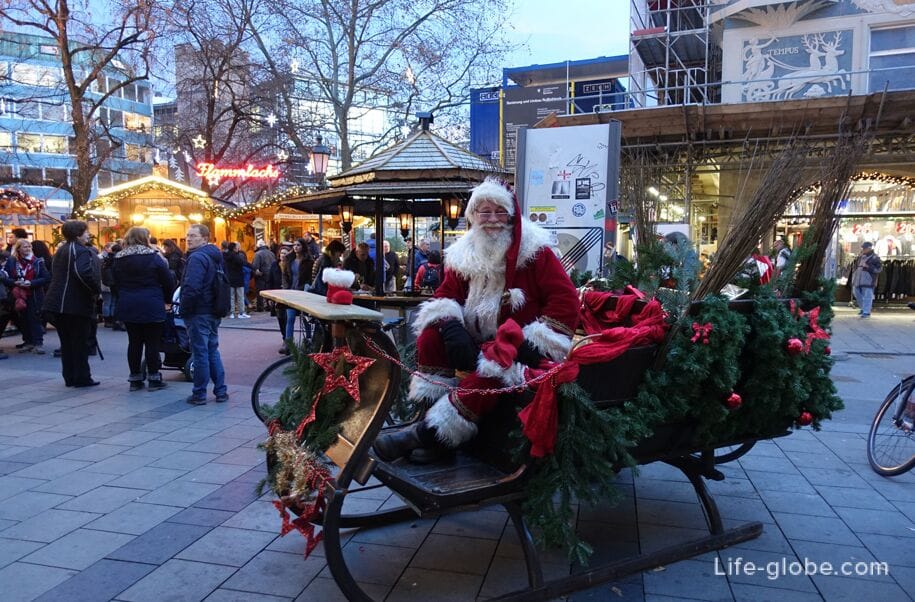
Within the historic old town is a lot of accommodation facilities ranging from 5 star hotels, ending guest houses and apartments (individual apartments with all amenities).
For example:
- 5-star hotel Bayerischer Hof with 5 restaurants, 6 bars and a Spa centre with a swimming pool on the roof. Link to the hotel
- 5-star hotel Vier Jahreszeiten Kempinski München features a restaurant, a bar, a Spa with pool and panoramic views of the city. Link to the hotel
- The 4-star Platzl Hotel - standard, with free Spa, a 16th century restaurant, and Soundproofed rooms. The hotel is situated near Hofbrauhaus beer. Link to the hotel
- 4-star hotel Torbräu offers a restaurant, free Wi-Fi and a daily Breakfast buffet included in the room rate. Link to the hotel
- The 3-star Mercure Hotel München Altstadt, with free high-speed Wi-Fi and a Breakfast buffet included in the room rate. The hotel is situated in a quiet quarter in the centre of the old town. Link to the hotel
- the hotel BEYOND by Geisel with a living area, which occupies two floors, with rooms and suites offering a panoramic view of the New town hall or square Rindermarkt. Link to the hotel
All accommodation in Munich, including in the historic old town, you can view and book here
